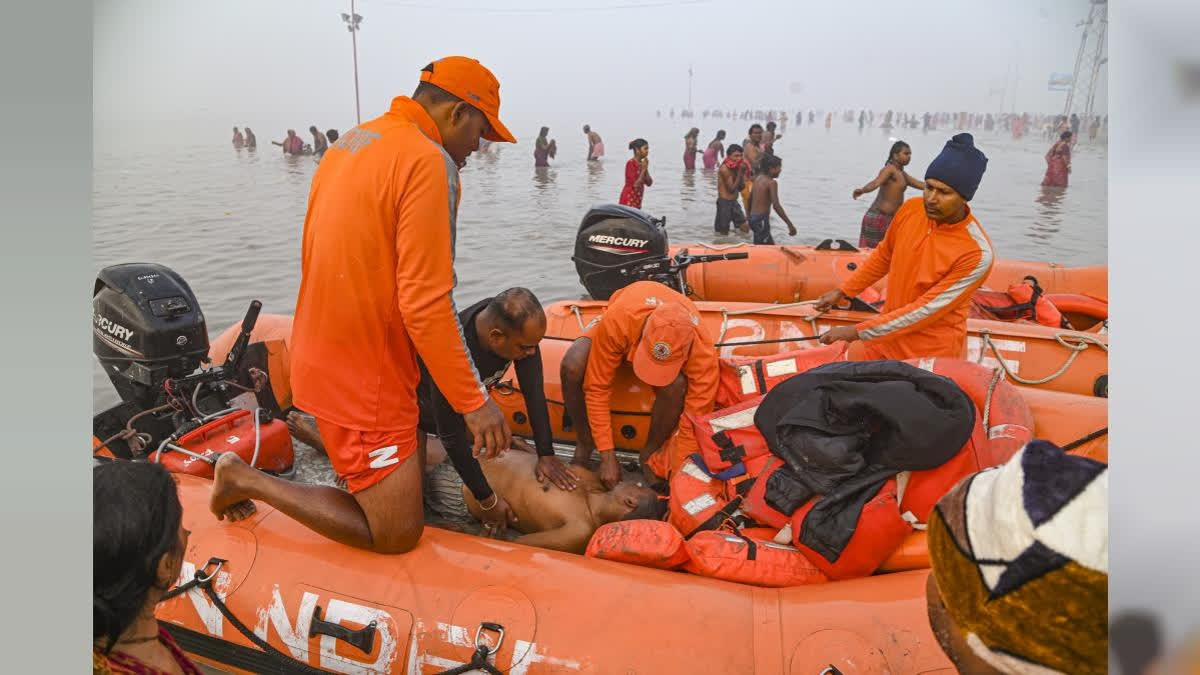New Delhi:The National Disaster Response Force (NDRF) was raised on January 19, 2006, as the main disaster response force of the country. Since then, NDRF Raising Day is observed annually on January 19.
History & Significance
In the mid-1990, a global discourse on disaster response and preparedness intensified, spurred by significant events like the Yokohama Strategy Plan (1994) and the Hyogo Framework for Action (2005). They both were adopted by the United Nations. This period coincided with a string of severe natural calamities in India including the Orissa Super Cyclone (1999), the Gujarat Earthquake (2001), and the Indian Ocean Tsunami (2004). These events underscored the critical need for a comprehensive Disaster Management Plan. Responding to this, the Disaster Management Act was enacted on December 26, 2005, leading to the establishment of the National Disaster Management Authority (NDMA) tasked with formulating policies, plans, and guidelines for disaster management.
Since its inception in 2006, NDRF has always proved its mettle in the realm of disaster response and disaster risk reduction. Being a specialised disaster response force, NDRF rescuers have saved lakhs of lives in various disasters and are always committed to its motto, 'Aapda Seva Sadaiv Sarvatra'.
The Strength
Initially established in 2006 with eight Battalions, the NDRF has now expanded to 16 Battalions, each comprising 1,149 personnel. Notably, the force underwent a significant transformation from being initially deployed for routine law and order duties to becoming a dedicated force for disaster response following a directive highlighted in a meeting between the NDMA and the Prime Minister on October, 25, 2007. This culminated in the notification of NDRF Rules on February 14, 2008, placing the force under the unified command of the DG NDRF.
The Organisation
The NDRF comprises 16 Battalions drawn from the central armed police force (CAPF), including BSF, CISF, CRPF, ITBP, SSB and Assam Rifles. Each battalion is composed of 18 self-sufficient specialised search and rescue teams, consisting of 47 members each, encompassing structural engineers, technicians, electricians, canine units, and medical/paramedic personnel. With a total strength of 1,149 personnel. All 16 units are proficiently equipped and trained to handle any type of natural and manmade disasters.
Sacrifice On The Line of Duty
Till now, 16 rescuers of NDRF have attained martyrdom in the line of duty. In one of the incidents, during the Uttarakhand Cloud Burst in 2013, a team comprising nine personnel of NDRF was engaged in the rescue and evacuation of pilgrims stranded in the high ridges of mountains at Kedarnath. The team displayed exemplary dedication and devotion to the highest traditions of NDRF. The men worked under strenuous conditions and rescued thousands of pilgrims. After accomplishing the assigned task, while returning, unfortunately, the chopper crashed near Gaurikund, and all nine NDRF brave-hearts made the supreme sacrifice in the line of duty.
